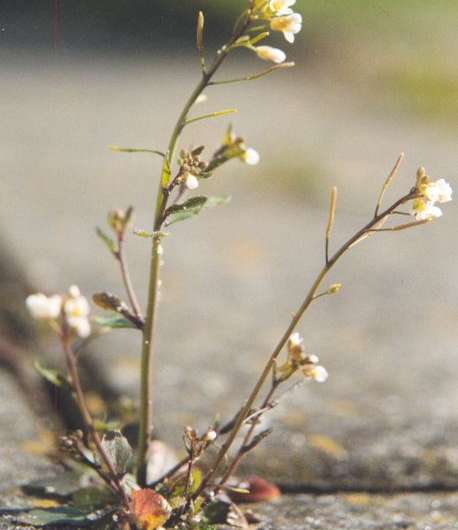This article has been reviewed according to Science X's editorial process and policies. Editors have highlighted the following attributes while ensuring the content's credibility:
fact-checked
trusted source
proofread
A sun protection mechanism helps plants to survive

Just as people can get sunburned, plants can also suffer from too much sunlight. To stay healthy, they use an internal "sun protection mechanism." Pierrick Bru, a Ph.D. student working with Alizée Malnoë at Umeå Plant Science Centre and Umeå University, has been studying a special component of this mechanism, called qH, and has found that it is quite adaptable.
The magic of photosynthetic organisms is that they can produce energy from sunlight. Plants have tiny structures in their cells, that, similarly to mini solar panels, catch sunlight and turn it into energy-rich compounds which the plant is then utilizing to grow and stay healthy.
However, when there is too much light, these structures can get overloaded and damaged. To prevent this from occurring, plants use a mechanism that converts excess sunlight into heat, allowing it to dissipate harmlessly.
"In our research we focused on qH which is one of the components of this mechanism. This component does not work quickly. It takes hours to turn on and off, and it is mainly active when plants are under prolonged excess of light stress, especially when combined with other environmental clues such as cold and/or drought," says Pierrick Bru.
To understand more about qH, Pierrick and his colleagues used the plant model organism Arabidopsis thaliana to conducted experiments. They modified the plant by removing one or more of the mini solar panels and found that the plant has a backup system: if one panel is missing, the others can compensate for it. However, when a particular small panel, known as Lhcb6, is not present, qH could not work properly and less of the excess sunlight was turned into heat.
The researchers have also investigated other actors that control the qH mechanism. They found that two of these actors are involved in building or repairing photosystem II—one of the two functional units where photosynthesis takes place. If either of the two actors found did not work well, photosystem II could not function as usual. This deficiency also caused problems for the plant's ability to use qH sun protection mechanism.
Pierrick Bru and his colleagues will continue investigating how exactly the defects of photosystem II impact the qH protection mechanism. This understanding will open doors to investigate if photoprotection qH is regulated similarly in crops.
"Crops are suffering already now from more extreme weather conditions caused by climate change. This will affect our capacity to grow healthy crops and good food for the increased population. Understanding how qH works and how plants cope with environmental stress will help to find ways to improve plant resistance to excess of sunlight, improving plant growth and increase agriculture productivity," says Pierrick Bru.
More information: Bru, Pierrick, Investigating the molecular mechanism of photoprotection, qH, in Arabidopsis thaliana
Provided by Umea University





















